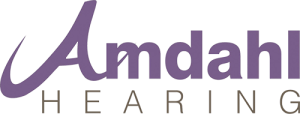At Amdahl Hearing, our patients are frequently referred to us by other doctors because an audiologist has different specialties from those of a general practice physician. Many times, the patient isn’t aware of what to expect from visiting a specialist of any kind, much less one whose focus is repairing one of our essential senses in everyday life.
Coming to a specialist for hearing issues is often a totally unfamiliar situation, especially for those who only recently began experiencing complications with their hearing. The uncertainty of visiting an audiologist can add unneeded stress to a simple doctor visit.
What Happens at Your First Audiology Appointment
At your first appointment, expect to be asked about your medical history and any specifics that relate to your symptoms. The doctor will run some tests. These tests may involve a familiar voice so consider bringing along a close friend or family member to assist and take notes while the doctor works. Below are a few common tests:
Audiometry Testing
Perhaps the most common hearing test patients will undergo is an Audiometry test–sometimes also called an audiogram. This test generally involves the triggering of a button or raising of the hand when noises are heard in a soundproof room. The sounds of these vary, based on their loudness and pitch, called intensity and frequency.
Air conduction testing identifies the softest sound able to be heard through headphones at a range of pitches. Bone conduction testing operates much the same as an air conduction test, except it specifically tests the softest sound able to be heard by directly stimulating the inner ear. This is accomplished with a bone vibrator placed directly behind the ear.
Otoscopy Exams
An Otoscopy is a procedure used to examine the outer ear and parts of the middle ear, including the auditory canal and tympanic membrane (TM). During this exam, your doctor will look into the ear canal with a special tool called an otoscope to look for problems within the ear canal. These problems include an excessive build-up of ear wax, problems with the ear canal or ear drum, or any blockages present that may restrict one’s ability to hear.
An Otoscopy exam can be used to detect signs of ear disease or abnormal development. Especially in children, doctors may look for signs of discharge, displacement, discoloration, or deformity.
Tympanometry
According to the Minnesota Department of Health, Tympanometry measures ear canal volume (ECV), tympanic membrane mobility (compliance), and middle ear pressure (pressure). During Tympanometry, an audiologist will use pressure to determine how the middle ear is functioning. This test can detect anything that would inhibit sound waves on their way to the ear drum including fluid, infection, or dysfunction of the eustachian tube.
After Your Audiology Appointment
You can expect the audiology appointment to take between 30 minutes to an hour depending on the tests that are carried out. After the tests are complete, the doctor will explain the results and make further plans to treat any issues that have been identified. This may include referral to another doctor like an ENT to rule out other conditions affecting your hearing or a hearing aid specialist to discuss standard hearing devices.
An audiologist appointment isn’t as scary as it may seem. Our excellent staff and doctors are experts at making patients feel at home during what may be a traumatic period in their life. Contact Amdahl Hearing today to schedule an appointment!
